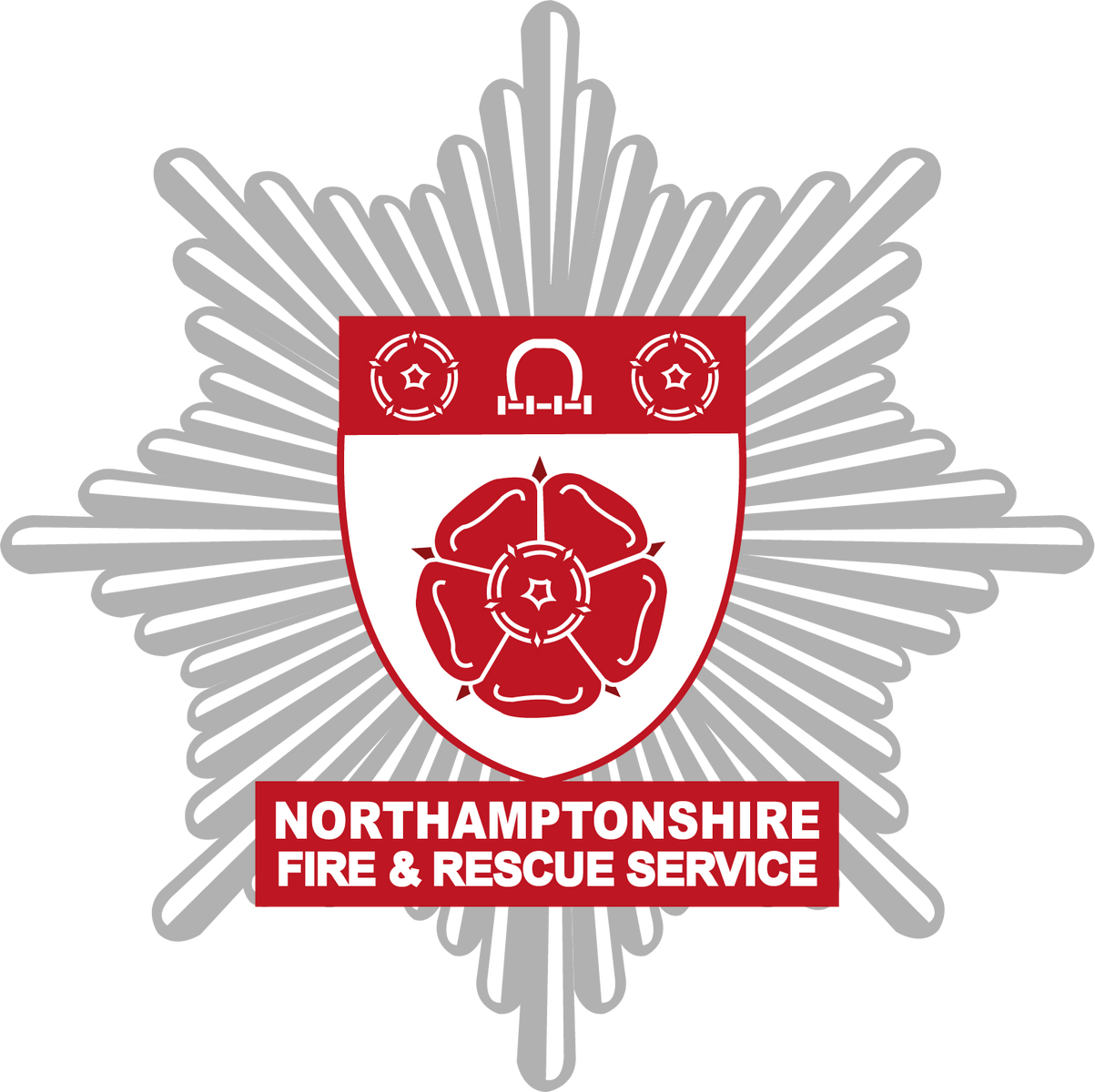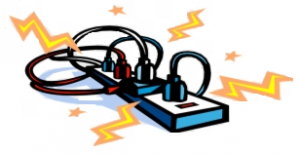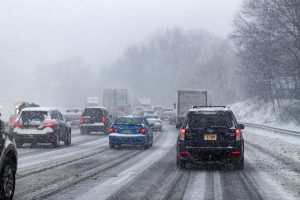Community Risk Register
The Northamptonshire Local Resilience Forum has a duty under the Civil Contingencies Act (2004) to produce a Community Risk Register (CRR). This document highlights risks that have the highest likelihood and potential to have significant impact to local communities resulting in wide scale disruption.
The purpose of the Community Risk Register is to:
- inform you about the highest risks in the county and their consequences
- detail steps that can be taken to become better prepared and more resilient in your home, business and community
- provide you with links to organisations and websites to find out more information
While certain risks are mentioned it does not mean that they will definitely occur in the County. It means there is a possibility of them happening and therefore all agencies within the local resilience forum have plans in place to respond to such incidents.
The Community Risk Register is the result of professional judgement from a range of contributors, historical evidence, scientific input and expert analysis in evaluating the key risks facing Northamptonshire.
Why it is relevant to you
The Community Risk Register identifies the risks that have the highest likelihood of happening in Northamptonshire.
Being aware of these and the consequences of these incidents will help you to be prepared should such an incident occur. Some may be more relevant to you than others, for example, if you live near a river, flooding is more likely to affect you. We have seen in previous years that flash flooding can happen anywhere and affect people’s homes, so it is useful for everyone to be aware of what to do.
Other consequences, such as a power cut, could affect any of us at any time, so being prepared is vital. You can also help others in your local community who are less able to help themselves.
Community Risk Register 2024 (PDF 9MB)
We are aware there may be accessibility issues with the document above. There is a plain text version of the document below, which you can click to expand each section.
The Community Risk Register is a document which is designed to inform the public about the key emergency risks that could occur in our county.
The aim of the Community risk register is to help you as an individual prepare your home, business or local community for an emergency situation.
The National Risk Register
The National Risk Register is a public facing version of the National Security Risk Assessment (NSRA), Which is a classified cross-government and scientifically rigorous assessment of the most serious risk facing the UK or its interests overseas.
It provides information of the most significant risks that could occur in the next two years which could have a wide range of impacts on the UK. The National Risk Register also sets out what the government, devolved administrators and other partners are doing about them.
Read more about the National Risk Register (NRR).
What is an emergency?
The Civil Contingencies Act 2004 defines an emergency as ”An event or situation that threatens serious damage to human welfare in a place in the UK or to the environment of a place in the UK, or war or terrorism which threatens serious damage to the security of the UK. To constitute an emergency this event or situation must require the implementation of special arrangements by one or more Category 1 responder.”
Northamptonshire’s main town of Northampton is situated in the East Midlands about halfway between London and Birmingham. It is one of the largest towns in England and is approximately seventy miles from London. The county is often described as the Rose of the Shires or County of Squires and Spires – a nickname that highlights the county’s rich history of nobility and of the stunning architectural heritage.
River Nene
The River Nene flows through Northamptonshire and is popular with boaters. The river is a hundred miles long and is the eighth longest river in the UK. There are several other major river systems and canals which connect Northamptonshire to various major towns and cities. These provided crucial water transportation via narrow boats which were towed along the side by horses.
Shoemaking
The 18th and 19th centuries saw Northampton evolve into an industrial town particularly known for its leather and shoe industry and the town soon became a prominent centre for these industries.
Northamptonshire is renowned worldwide for its tradition of high quality shoe making and has earned it the esteemed title of being the ‘shoe capital of the world’.
Population and demographics
Northamptonshire has an estimated population of 747,622. Approximately 31% of the county’s population lives in the densely populated town of Northampton. In total, 68.8% of the county’s population live in ‘urban city and town’ areas, 20.1% in areas classified as ‘rural town and fringe’ and 11.1% in ‘rural villages and dispersed’.
Industry
Northamptonshire’s dynamism is shown in several major industry sectors which include financial services, advanced manufacturing, healthcare, hospitality, logistics and distribution and retail.
About the Local Resilience Forum
The Northamptonshire Local Resilience Forum (most commonly known as the LRF) was formed as a result of the Civil Contingencies Act (CCA) 2004. The LRF’s main aim is to provide multi-agency co-ordination between responders across the county.
LRF members
The LRF has representation from Police, Fire, Ambulance, Military, NHS, Local Authorities, Environment Agency and Utilities with support from a Government Liaison Officer. It is co-ordinated by a Business Manager whose main role is to organise multi-agency meetings, ensure risk assessments are maintained and support training and exercising across partners. They manage relevant documents on shared websites.
The LRF is not a responder itself. Its sole duty is to maintain effective co-operation and co-ordination between emergency responders, so that efforts are not duplicated and each understands how their partner agencies work.
The LRF ensures the county is best prepared for a range of emergencies that may arise and can also conduct debriefs of past emergencies especially if more than one agency was involved. Once the debrief is conducted, gaps will be identified, and the finished document will be used as a future training exercise to ensure all future responses are better handled.
Local Resilience Forum Annual Report
The Local Resilience Forum Annual Report acknowledges the work, significant improvements and achievements of the partnership over the past twelve months. You can read the report below.
- Malicious Attacks
- Cyber and Fraud
- Serious Organised Crime
- Accidents and Systems Failures
- Natural and Environmental
- Human and Animal Health
- Social Disruption
As a partnership the Local Resilience Forum considers all risks by looking at the likelihood of them occurring and considering the potential impacts, to our health (casualties, fatalities and psychological effects), the local economy, the local environment and people’s lives (evacuation, shelter, utilities).
These are the risks that are currently being reviewed by the Local Resilience Forum.
These resources will help you quickly prepare for the hazards and threats that may affect you.
Make sure you:
- have suitable insurance, the Association of British Insurers website has useful information on home insurance and flooding insurance, but don’t forget car insurance too
- fit and maintain smoke alarms
- prepare a first aid kit
- sign up to Community Messaging and information services
Think about:
- a safe meeting place with family members should an emergency occur whilst you are away from home, i.e. whilst at work, school or college
- whether elderly or vulnerable family, friends or neighbours may need your help putting together a grab bag of things to take in an emergency, such as medication, ID, mobile phone and charger, glasses, keys, wallet and cash
- where you would go and stay – and how you would get there – if an emergency meant that you couldn’t stay at home
- how your family will stay in contact in the event of an emergency
The government publication ‘Preparing for Emergencies’ provides a useful guide to help people, businesses and communities to identify and prepare for the hazards and threats that may disrupt their lives.
Find out:
- where and how to turn off water, gas and electricity supplies in your home or business
- the emergency procedures for your children at school and at your workplace
Go in, Stay in, Tune in
Major emergencies can be caused by anything from flooding and transport accidents to chemical spills and terrorism.
In nearly every case you can help by following these three simple steps:
- Go indoors, close doors and windows and shut down ventilation systems if it is safe to do so. Unless there is an obvious risk to the property, this will give you good short-term protection against the vast majority of hazards
- Stay indoors until you know more about the situation and the appropriate action you need to take to protect yourself further. The action you should take will be different depending on the nature of an incident so you could put yourself at more risk by not waiting for further instructions.
- Tune into local radio, television and social media channels to find out more about what is happening. If there is a major emergency, radio and TV companies will interrupt their programs to give the public safety advice and information about the incident.
Fire prevention and safety
The emergency services are trained to cope with a wide range of emergency situations, but there is a lot that you can do to help them and yourself:
- fit one smoke alarm per floor of your home and check it weekly (introduce Test it Tuesday!)
- make an action plan so that everyone in your household knows how to escape in the event of a fire
- take care when cooking with hot oil – use a temperature-controlled deep fat fryer
- never leave lit candles unattended
- ensure cigarettes are stubbed out and disposed of carefully
- never smoke in bed
- keep matches and lighters out of reach of children
- have your chimney swept regularly
- take extra care in the kitchen – cooking accidents account for 59% of fires in the home
- take care when you’re tired or when you’ve been drinking – half of all deaths in domestic fires happen between 10pm and 8am
- if you are unlucky enough to have a fire at home, don’t tackle the fire yourself, however small it is
If there is a fire, get out, stay out and call 999.
For more safety and advice information visit Northamptonshire Fire and Rescue Service.
Health advice
If you think your situation is a life threatening emergency call 999.
If you need help now, but it’s not an emergency, then call 111 or go to 111.nhs. Do not attend Accident and Emergency unless it is a true emergency. You can also access health services from high street pharmacists who can see and treat a range of issues such as sore throat and earache.
NHS 111 is a free number from landlines and mobiles and is available 24 hours a day, 365 days a year. When you call you will speak to a trained health adviser or clinician and, following a short assessment, be directed to the right service, at the right time and as close to your home as possible.
First Aid and Self-Help
In case of minor accidents and injuries, keep a well-stocked first aid kit in your home and car. Ensure that it’s locked and stored in a cool, dry place out of reach of children.
Find out what your first aid kit should contain. Remember to check your medications regularly to ensure they are within their expiry dates.
It may also be useful to keep a basic first aid manual or instruction booklet with your first aid kit. Further advice can be sought from 111. These NHS web pages provide information and guidance about common first aid situations, but they aren’t a replacement for taking a first aid training course.
Basic first aid courses are run regularly in most areas around the UK. In Northamptonshire, St John Ambulance and British Red Cross both provide a selection of first aid courses, as well as courses from independent first aid training companies.
The threat of terrorism in the UK is real, but with a little knowledge you can increase your safety and help protect yourself against a terrorist attack. To find out more, visit ProtectUK.
Reporting an imminent threat or suspicious behaviour
To report an imminent threat, call 999.
To report any suspicious behaviour or activity ring the confidential Anti-Terrorist Hotline on 0800 789 321.
In the rare event of an attack there are three key steps for keeping safe
- Run – Run to a place of safety. This is a far better option than to surrender or negotiate. If there’s nowhere to go, then
- Hide – It’s better to hide than to confront. Remember to turn your phone to silent and turn off vibrate. Barricade yourself in if you can. Then finally and only when it is safe to do so
- Tell – Tell the police by calling 999
Support services
Victims of Terrorism provides details of official helplines and support services available to victims, survivors, witnesses, and family members of those affected by terrorism.
Counter-terrorism training
An online counter terrorism training course has been made available so you can learn how to spot the signs of suspicious behaviour and understand what to do in the event of a major incident, visit Gov.uk.
In today’s society, cyber criminals can seek to steal money or data, disrupt government and individuals, or draw attention to a cause. Smartphones, computers and the internet have become an integral part of our daily lives, making it difficult to function without them.
From online banking and shopping to email and social media, it is vital to take precautionary measures to prevent these criminals from accessing our accounts, data and devices.
How to report fraud and cybercrime
Action Fraud is the UK’s national reporting centre for fraud and cybercrime where you should report fraud if you have been scammed, defrauded or experienced cybercrime. Call 0300 123 2040. You can also register to receive free, direct, verified, accurate information about scams and fraud in your area.
The National Cyber Security Centre provides practical guidance for individuals and families, self-employed and sole traders, small and medium sized organisations, large organisations, public sector and cyber security professionals.
Phishing
Be aware that many fraudulent activities begin with a phishing email, which is defined as an attempt to obtain sensitive information (such as credit card details, usernames and passwords) by posing as a trustworthy entity in electronic communication.
Keep in mind that reputable banks and financial institutions won’t ask you to verify your bank details by clicking on a link in an email. Even if the correspondence appears genuine, it’s best to be cautious and not to trust it.
Protect yourself from fraud and cybercrime
- Do not give any personal information (name, address, bank details, and email or phone number) to organisations or people before verifying their credentials.
- Make sure your computer has up to date anti-virus software and a firewall installed.
- Be aware that many fraudulent activities begin with a phishing email, which is defined as an attempt to obtain sensitive information (such as credit card details, usernames and passwords) by posing as a trustworthy entity in electronic communication. Keep in mind that reputable banks and financial institutions won’t ask you to verify your bank details by clicking on a link in an email. Even if the correspondence appears genuine, it’s best to be cautious and not to trust it.
Identity theft can happen easily if fraudsters get hold of even a small amount of personal information. Always remember to shred receipts that display your card details and any mail that has your name and address on it.
Thousands of lives are damaged every year by serious and organised crime. From firearms to cybercrime and modern slavery to human trafficking, Northamptonshire Police are committed to disrupting and dismantling co-ordinated, criminal behaviour.
The motivation behind serious organised crime (SOC) is usually for financial gain and the effects of SOC can often be felt by everybody in the community, regardless of if they’re involved or not.
This is why we need your help to identify and bring those involved with organised crime groups to justice.
Different types of SOC
Tell us if you know about:
- Drug dealing
- Children involved in supplying drugs
- People being forced to hand over their pay
- Drug dealers moving in with a vulnerable person (known as cuckooing)
- People who use weapons
How you can prepare and protect yourself
Browse the Northamptonshire Police website for first-hand knowledge, industry best practices and practical crime prevention advice from officers and specialist teams all across the police.
You can report by calling 999 in an emergency or 101, or you can report anonymously via Crimestoppers on 0800 555111.
This section covers industrial accidents, releases of hazardous materials as well as utility and infrastructure failures or outages.
COMAH (Control of Major Accident Hazard) Regulations
Unless you are advised otherwise, the national Go In, Stay In, Tune In message applies.
COMAH regulations exist to reduce the effects of major accidents involving dangerous substances. They apply to any site storing or handling large quantities of industrial chemicals. Operators must take all measures necessary to prevent major accidents and to limit their consequences for people and the environment.
The regulations operate on two levels depending on the type and quantity of chemicals handled, Lower Tier and Upper Tier.
Lower Tier sites are required to document a Major Accident Prevention Policy. An Upper Tier COMAH site is required to produce a full safety report which proves that all necessary measures have been taken to reduce risks posed by the site.
There are no Upper Tier sites within Northamptonshire, we have 7 Lower Tier Sites, some of these do have multi-agency plans:
- Miswa Chemicals Limited, Northampton NN4 7PW (West Northants)
- PX Limited, Northampton NN5 5JN (West Northants)
- Gasrec Bio-LNG Station, DIRFT NN6 7GY (West Northants)
- Tesco Distribution Limited, DIRFT CV23 8YH (West Northants)
- CPL Aromas Limited, Brixworth NN6 9UB (West Northants)
- Lumentec Technology UK Limited, Towcester NN12 8EQ (West Northants)
- Scott Bader UK Limited, Wollaston NN29 7RL (North Northants)
You can now search online for COMAH establishments in your area.
Northamptonshire LRF partners work closely with the site operators to ensure plans are up to date and regularly tested.
Electricity power failure
During a power cut, call 105. It’s free and will put you through to a local network operator who can give you help and advice. To find out more visit Powercut105.
During a power cut
- Switch off all electrical appliances, ready for when the power comes back on
- Leave a light on so you know when the power outage has been resolved
- Check to see if your neighbours are okay
- Report the power cut
- Keep a torch handy – it’s much safer than using candles
- Get a battery-powered or wind-up radio (useful for keeping up to date with relevant local news)
- Keep warm – keep a blanket and warm clothing handy and fill a vacuum flask or hot water bottle
- Stock your cupboard with food and drink that doesn’t require electricity to prepare it
- Keep your mobile phone and laptop fully charged
- Check network operators website or social media channels for updates
Water
Top tips on protecting your home or workplace from burst water pipes:
- Wrap-up your pipes – pipes can be exposed to freezing temperatures if they’re in a part of your home that isn’t heated. Water companies recommend that any water pipes which are exposed to cold temperatures (such as those in the loft or in outside buildings like garages and out-houses, or your outside tap) should be protected with lagging. This helps to keep your pipes cosy and warm, reducing the risk of them freezing and bursting
- Find your stop tap – if there’s a burst pipe at home, the fastest way to stop the flow is to turn your stop tap off. Normally they’re under the kitchen sink or in the downstairs toilet – but may also be in a utility room or garage.
- If your home has a water storage tank – the sort found in the loft or airing cupboard – it may have an additional stop tap or valve near to the tank itself. This will shut off the water supply to your hot water system. Once your stop tap has been located, it’s worth checking it works, as sometimes they can seize up if not used often
For more information, useful videos and advice visit Anglian Water who are our main supplier.
However, the following also cover a small part of the county:
Anglian Water offer a Priority Services Register. This provides practical support for people with a wide range of needs.
Gas
To report a gas or carbon monoxide emergency, or if a pipeline is struck (even if no gas leak has occurred) call 0800 111 999 – 24 hours a day.
In the event of an emergency:
- do not smoke or light matches
- do not turn electrical switches on or off
- open doors and windows
- turn off the meter at the control handle unless the meter is in the cellar
- call the National Gas Emergency number (0800 111 999)
General safety advice
- Get your gas appliances checked annually by a Gas Safe-registered engineer
- Always check IDs before allowing anyone into your home
Reservoirs and dams
According to the Environment Agency (EA), across Northamptonshire there are 39 dams and reservoirs of varying size and construction. There are also a further 18 reservoirs in adjacent counties that, if they were to breach would impact the Northamptonshire area.
The potential flood risk posed by these sites in the unlikely event they fail depends on the geography of the local area. The flood warning information service enables you to enter the details of your property and identify whether you are at risk from rivers, surface water or from dams and reservoirs for more information visit the Flood Warning Information Service.
Severe weather
- Listen to weather forecasts and heed any warnings of extreme weather
- Plan any journeys or activities with the weather in mind
- Only travel if essential – if you have to travel in severe weather, check and prepare your vehicle first
- Make sure you have adequate clothing and emergency supplies (including bottled water) in your vehicle
- Check for weather warnings via the Met Office helpline on 0370 900 0100 or sign up to receive Met Office alerts directly by email or by mobile app.
Flooding
With its vast array of watercourses, Northamptonshire has had more than its fair share of flooding incidents. Flooding at its most serious can affect many different aspects of our daily lives.
Surface water flooding is particularly difficult to forecast and can happen at very short notice. Never walk or drive through flood water, there may be underwater hazards and it may be deeper than it appears.
You can visit our dedicated Flooding and Flood Risk Management section for how to report a flood, and how to protect yourself against and during a flood.
Heatwave
The main risks posed by a heatwave are:
- not having enough water (dehydration)
- overheating, which can make symptoms worse for people who already have problems with their heart or breathing
- heat exhaustion and heatstroke
Heatwaves can be dangerous, especially for the very young, very old or those with certain medical conditions:
- stay out of the heat – especially between 11am and 3pm when the sun reaches its peak
- cool yourself down with plenty of cold drinks – avoid alcohol and hot drinks
- keep curtains and blinds closed during the day to keep rooms cool
- consult your GP if you feel unusual symptoms or call NHS 111 if symptoms persist
- call 999 for an ambulance if a person has severe symptoms, such as loss of consciousness, confusion or seizures
Cold weather
Extreme weather and cold temperatures increase the risk of illness and injury:
- keep your home warm, ideally heat to at least 18°C
- get help with money – there are benefits and other help you can get to keep your home warm
- get the flu jab
- wear multiple layers and good grip shoes or boots if you have to go outside
- have plenty of food and hot drinks
The Adverse Weather and Health Plan (AWHP) helps prevent the major avoidable effects on health during periods of cold weather in England.
For information to help you, your business and your community plan for severe weather, visit the Community Resilience pages of the Met Office.
Wildfires
During hot periods it’s important to take precautions and know how to stay safe during a wildfire.
If you see a wildfire:
- Stay calm
- Ensure you are in a safe location
- Call 999 and provide as much detail as possible about the fire including its size and location.
Space weather
Some of the ways the UK is preparing for such an event is improving system resilience in case of a major solar flare which would disrupt all electrical items and communication systems.
Developing space weather forecasts is also one of the ways the UK is preparing for a severe space weather event. The Met Office Weather Operations Centre (MOSWOC) is one of three space weather prediction centres around the globe. It provides the vital information to help build the resilience of UK infrastructure and industries in the face of space weather events, thereby supporting continued economic growth.
Human diseases
Human diseases take a variety of forms, some of which have the potential to cause a civil emergency due to the number of people they might affect. One such risk is an influenza (‘flu’) pandemic. These occur when a flu virus evolves that few people (if any) are immune to.
There are important differences between ‘ordinary’ seasonal flu of the kind that happens in winter, and pandemic flu. In a pandemic, the new virus will spread quickly and cause more serious illness in a large proportion of the population, due to the lack of immunity.
There is a high probability of a flu pandemic occurring, but it is impossible to predict when, or exactly what it would be like. Emerging infectious diseases are closely monitored by public health agencies and international partners such as the World Health Organisation and the UK Health Security Agency.
Information will be provided on specific diseases as and when they emerge.
As a reminder, hygiene is the main method that can help prevent the spread of germs. Carry tissues and use them to catch coughs or sneezes, bin the used tissues as soon as possible and then wash your hands to kill the germs.
- Catch it
Germs spread easily. Always carry tissues and use them to catch your cough or sneeze. - Bin it
Germs can live for several hours on tissues. Dispose of your tissue as soon as possible. - Kill it
Hands can transfer germs to every surface you touch. Clean your hands as soon as you can
Animal diseases
Animal diseases threaten the UK for three main reasons:
- the potential for some diseases to spread from animals to humans and cause illness
- they affect the animals on which we rely for food, trade, or to maintain ecosystems – this is particularly true of Northamptonshire with its huge agricultural presence
- the agricultural community is commercially important to Northamptonshire in the provision of employment, and in supporting other industries and local services
The early reporting of any suspicion of animal disease is vital. If you have concerns about the health of your animals, discuss them with your veterinary surgeon or report to DEFRA APHA directly.
Latest information, resources and contacts can be found on Gov.uk.
You can also sign up to the Alerts Service to keep up to date with the latest news.
The World Organisation for Animal Health is a comprehensive resource of more than 50 wildlife diseases which may have a serious impact on livestock health and public health and can adversely affect wildlife conservation.
Social disruption can be anything, from public disorder to industrial action (or strikes) with temporary closures and reduced services to critical public services.
Public disorder includes rioting, looting, vandalism, violence and arson.
Consequences of public disorder may include:
- physical/psychological casualties;
- disruption to critical services, particularly policing and health;
- damage to property and infrastructure;
- possible evacuation or temporary shelter requirements;
- possible economic damage.
Industrial action can lead to:
- disruption of essential services, particularly transport, finance, health and education;
- disruption to business via loss of working hours;
- possible public disorder;
- economic damage (particularly for transport sector industrial action).
If you are unsure what to do:
- Go in. Stay in. Tune in.
- Northamptonshire Police plans and prepares for outbreaks of public disorder however unlikely. It has specially trained officers who are able to deploy quickly to local disorder or where necessary to support other parts of the country if disorder breaks out. They work very closely with other UK police forces to ensure that each area and the country as a whole are as well prepared as they can possibly be
Northamptonshire Talking
Northamptonshire Talking (new name for Neighbourhood Alert) is a free messaging service from Northamptonshire Police and local partner organisations, providing news and updates on policing and community matters that are relevant to you.
You can sign up to receive email updates about crime and suspicious activity where you live or work, crime prevention advice and updates from your local neighbourhood policing team.
You can choose the type of information you want to receive and whether you would also like to get news and information from the Police, Fire and Crime Commissioner and Neighbourhood Watch.
Other resources include:
What is the Community Risk Register (CRR)?
At its most basic the risk register is a list of emergencies which might happen in the area, ranked in order of how likely they are to happen and how badly they will affect the community.
Why produce a risk register?
It is a legal requirement under The Civil Contingencies Act (2004) and it is a tool to both ensure communities have an awareness of the risks in their area and that organisations resources are being targeted to have the most benefit.
What science is the CRR based on?
The CRR is based on a National Risk Register produced by the Government. This is centred around a range of data including historic, scientific and expert analysis to assess the risks to the UK as a whole. Using this information we can identify which are relevant locally and add any additional risks. Again this process involves looking at a range of data, including incidents that have occurred, local knowledge and expert guidance.
What has it got to do with me?
By producing this information and sharing it with you we hope that you will be in a better position to cope in the event of an incident. But it goes beyond you if your place of work is at risk of flooding, raising the issue with managers may ensure that in the event of flooding the business survives. Checking that an elderly relation is okay in the event of severe weather may save their life.
Isn’t this all just common sense?
Yes, a lot of the information contained in this document is common sense but by combining all the common sense from a large number of agencies into one document, we hope to provide a useful checklist and source of information.
Why should I do this as it will never happen to me?
Unfortunately not – whilst rare, major incidents do happen both locally and nationally. If we plan and prepare for such incidents they will have less of an impact. Surely it is better to spend a little time now preparing for something which may or may not happen as opposed to regretting not doing anything later.
Won’t the emergency services just respond?
In the event of a large scale incident the emergency services and others will be forced to prioritise their response to those who need it most.
The community can reduce the strain on the emergency services and others by taking some simple actions before, during, and after an event. Some of these are outlined in this document.
For more information contact the Northamptonshire Local Resilience Forum.
Write to:
Northamptonshire Local Resilience Forum
c/o Northamptonshire Police
Wootton Hall Park
Northampton
NN4 0JQ
Email: lrf@northants.police.uk







 Fire Risk Assessment (worked example for House in Multiple Occupation (HMO)) (PDF 389KB)
Fire Risk Assessment (worked example for House in Multiple Occupation (HMO)) (PDF 389KB)
